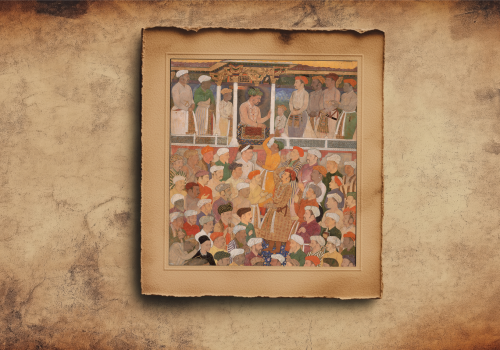Pierre Cuillier-Perron (1755–1834) was a chief and powerful deputy in northern India. Perron endeavored to extend Maratha influence up to the River Sutlej. When in 1800 the British emissary, Mir Yusaf ‘Ali Khan, came on a mission to the court of Ranjit Singh, Perron did not wish for an entente to take place between him and the English. He wrote to both Ranjit Singh and the Malva chiefs, advising them not to trust the British and to drive their agent out of their territory.
For a short period, Perron’s influence loomed large over the Sikh area below the Sutlej. In 1801, the Sikh chiefs of Patiala, Nabha, Jind, Kaithal, Ladwa, and Thanesar, harassed by the depredations of the Irish adventurer George Thomas, solicited his aid. Perron readily agreed, and a Maratha force, 12,000 strong, under Louis Bourquien, quickly expelled George Thomas from their territories. However, Perron began treating the Malva Sikh chiefs as dependents of the Scindia and subjected them to severe exactions. Contemporary British opinions that Perron could have easily subdued the Sikhs and become master of the Punjab were mere conjecture.
The reports of a military alliance between Ranjit Singh and Perron, supposedly signed at Karnal, were unsubstantiated. Though some evidence of Perron’s overtures to Ranjit Singh exists, it is clear that the latter shrewdly refused to enter into a pact with the Marathas, who were on the verge of war with the English. In 1803, Perron lost favor with Daulat Rao Scindia. Fearful of Maratha vengeance and certain of the impending collapse of Maratha power in their clash with the English, Perron fled into British territory. He reached Europe in 1805 and lived in retirement in France until his death in 1834.
References :
1. Grey, C. and H.L.O. Garrett, European Adventurers of Northern India. Lahore, 1909
2. Franklin, W., The Military Memories of George Thomas Calcutta, 1803
3. Compton, H., A Particular Account of the European Adventurers offindostanfrom 1784-1803. London, 1893







